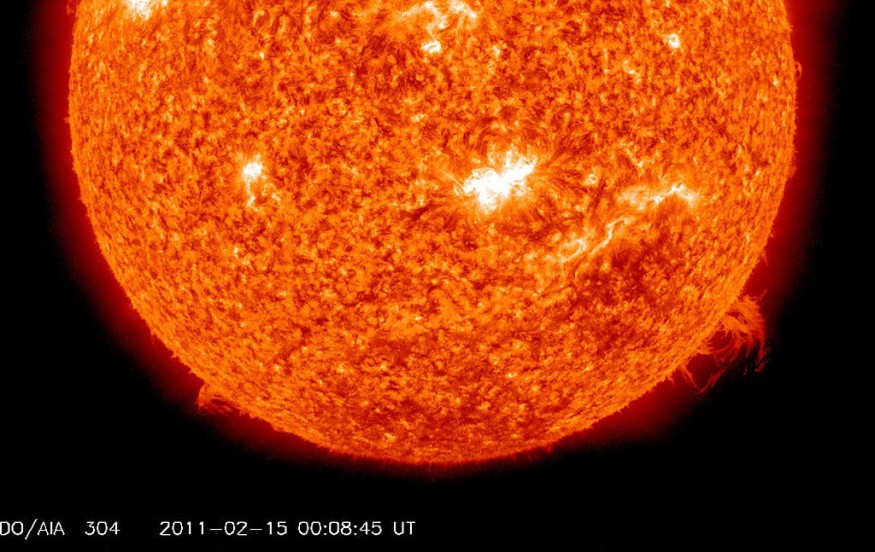
Experts said that the Earth could encounter two solar storms that may later bring radio blackouts. This phenomenon is being predicted after the sun released two powerful streams of energized particles this week.
Officials said that this event could cause a 75% chance of radio blackouts at the time that they hit the planet. The solar storms were set to transpire on Tuesday and Wednesday, with experts saying that some effects could be felt on Thursday.
Disruptions In Communications
Initially, a solar storm already took place on Monday and this had brought disruptions over communications across the Pacific Ocean.
Experts from the National Oceanic and Atmospheric Administration (NOAA) are giving a 75 percent chance for M-class flares (radio black out causing flares) over the next three days while two sunspots are still observed in the Earth's view.
During these blackouts, signals between the 3 to 30 MHz band are usually the most susceptible and experts said they have seen issues with GPS and other signals in the past as well.
The NOAA said that the sun has been busy producing some excitement of its own, which is an X5 solar flare. This was the largest solar flare observed by NOAA's Space Weather Prediction Center (SWPC) since 2017.
Authorities said that as Earth approaches the peak of Solar Cycle 25, the public should expect to see more sunspots, each of which is a region of intense magnetic activity capable of producing solar flares and coronal mass ejections, or CMEs.
This period of elevated activity can last up to several years, with impactful space weather events that are possible to happen in 2024.
Geomagnetic Storm
It was explained that a solar storm, also known as geomagnetic storm, occurs when the solar wind - which consists of charged particles that are constantly streaming from the sun - interact with the Earth's magnetic field, or magnetosphere, causing a significant disturbance.
The type and severity of that disturbance usually depends on variations in the solar wind, which can produce major changes in the currents, plasmas and fields in Earth's magnetosphere.
Intense geomagnetic storms can bombard the Earth with subatomic particles, in turn potentially disrupting navigation systems by interfering with radio and GPS signals, as well as electrical power networks.
Experts explained that solar flares emit radiation, mostly in the form of ultraviolet light and X-rays.
The radiation will then reach the sunlit side of Earth within eight minutes, traveling at the speed of light.
According to the SWPC, these energetic blasts can interfere with radio signals, which was what happened after a strong solar flare briefly interrupted aircraft communications on December 14, 2023.
Some flares are accompanied by CMEs, which are highly-charged bubbles of the sun's plasma emerging from the sun's outer atmosphere, known as the corona.
As this bubble radiates outward, it carries the sun's magnetic field with it, taking between 15 hours and a few days to close the gap between the sun and Earth.
The NOAA explained that CME can collide with Earth's magnetosphere, which is considered as the barrier that protects us from the harshest impacts of space weather.
It is this collision between a CME and Earth's magnetosphere that produces geomagnetic storms.
Related Article : Solar Storm Warning: X1 Solar Flare Reported on May 10, Radio Blackout Alert Issued
© 2026 NatureWorldNews.com All rights reserved. Do not reproduce without permission.





